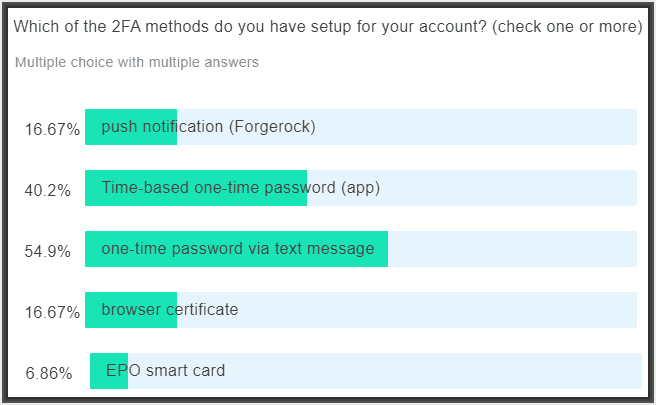The US State Department says that an “expedited” passport renewal by mail has a processing time of 7-9 weeks. I recently had the good fortune to get a renewal done by mail in less than a month. My renewal papers got delivered to the State Department on August 16, 2023, and I had my new passport in hand on September 15, 2023. Here are things that probably helped. Continue reading “Getting a US passport renewed promptly”
Argentina intellectual property office becomes more trendy, modern and up-to-date

The National Institute of Industrial Property of Argentina (INPI) had already been trendy, modern, and up-to-date, having joined the DAS system on October 1, 2019 (blog article). Today’s news is that INPI has become even more trendy, modern and up-to-date. It now participates in DAS in more ways. Continue reading “Argentina intellectual property office becomes more trendy, modern and up-to-date”
How green optical fiber connectors work
Today is the day — Italy becomes an Accessing Office in DAS
![]() You heard it here first (blog article, July 13, 2023)! Today is the day that the Italian Patent and Trademark Office becomes an Accessing Office in the DAS system for the following kinds of applications:
You heard it here first (blog article, July 13, 2023)! Today is the day that the Italian Patent and Trademark Office becomes an Accessing Office in the DAS system for the following kinds of applications:
-
- national industrial design applications
- national patent applications
- national trademark applications
- national utility model applications
- PCT international applications
Continue reading “Today is the day — Italy becomes an Accessing Office in DAS”
Comments on USPTO’s DOCX initiative
On June 6, 2023, the USPTO published a Federal Register notice (88 FR 37039) requesting comments on USPTO’s estimates of the burden that the DOCX application filing initative will impose upon applicants. That FR Notice had set a closing date of August 7, 2023 for filing of comments.
As it turns out, nine comments got filed. You can see them here:
-
- Comment by Richard Neifeld (July 27, 2023)
- Comment by Kilpatrick Townsend & Stockton LLP (July 30, 2023)
- Comment by Carl Oppedahl (August 5, 2023)
- Comment by Laurence Hyman (August 5, 2023)
- Comment by American Intellectual Property Law Association (August 6, 2023)
- Comment by James Lake (August 6, 2023)
- Comment by 152 Patent Practitioners, PTAAARMIGAN (August 6, 2023)
- Comment by Benjamin Keim (August 6, 2023)
- Comment by One Hundred Seven Patent Practitioners (August 7, 2023)
All of the comments are extremely negative towards USPTO’s DOCX initiative. Here is what listserv member Richard Schafer had to say about the AIPLA comments:
I haven’t had time to read the entire letter, but based on the executive summary section, I don’t remember seeing a public comment from the AIPLA or any other professional organization that was this strongly negative about a PTO proposal. I can only imagine the frustration certain portions of the PTO must be experiencing to have the largest professional organization in this field take such a strong stance against the entire DOCX proposal.
I’m sure someone in the PTO was lobbying AIPLA to try to prevent this kind of statement. Thankfully, that lobbying has clearly failed.
Here is my reaction to the AIPLA comments. Highlights of the AIPLA comment letter include:
-
- “The financial burden on the public as presented in the Notice would therefore be 79 times greater than that saved by the Office … .” (letter at p. 5)
- “In order to minimize the burden, AIPLA strongly urges that applicants be able to file a single document (such as a text-based PDF) that is legally sufficient to correct any errors that may be introduced by IT systems.” (letter at p. 7)
- “DOCX filing is fraught with legal and technical challenges that have not been addressed and for which solutions are unlikely.” (letter at p. 7)
- Historically what one has sometimes observed in comment letters from some professional associations is that a letter might use relatively soft language. When such use of relatively soft language is observed, it is perhaps understandable given that any professional association has no choice but to try to take into account a range of views among its membership and among the participants in the comment-drafting process. From my own perspective as a reader of many comment letters from many professional associations, I see this particular comment letter from AIPLA to be about as strongly worded as any I have ever seen from any professional association. USPTO management (and decisionmakers at OMB) ought to not to take such a comment letter lightly.
USPTO’s new “welcome letters”
The USPTO has announced that it plans to send a “welcome letter” to each applicant that files a new trademark application or patent application at the USPTO. You can see the actual wecome letters archived here (trademarks) and here (patents).
Comment letters about DOCX got sent
(Update: the seven other comments are now public, and you can see them here.)
Hello colleagues. The comment letter about USPTO’s DOCX initiative that I discussed in an earlier blog article got finalized and it received one hundred and seven signatures. It got filed in response to the Federal Register notice (which you can see here) within the due date of August 7, 2023. You can see the letter, as signed and filed, here.
Thank you very much to the One Hundred Seven signers!
I also sent in a separate comment letter so as to enter three documents into the record. You can see that separate comment letter, dated August 6, 2023, here.
Please sign this letter about DOCX
Hello colleagues. Yesterday I posted a draft comment letter about USPTO’s DOCX initiative. Colleagues provided very helpful suggestions and corrections. With the benefit of the suggestions and corrections, the letter is now “locked”. It won’t change again. You can see it here.
Right now the letter has 42 signatures. The signers have, directly or through their firms or corporations, filed more than 26000 US patent applications in the past ten years. The signers have, directly or through their firms or corporations, paid more than $38 million in fees to the USPTO in the past ten years.
Please consider adding your signature to those who have already signed it.
Why penstemon is one-sided?
 One of the most familiar and beloved wildflowers in the Rocky Mountains is the so-called “one-sided penstemon”. True to its name, the plant has its flowers all on one side of the stem. Continue reading “Why penstemon is one-sided?”
One of the most familiar and beloved wildflowers in the Rocky Mountains is the so-called “one-sided penstemon”. True to its name, the plant has its flowers all on one side of the stem. Continue reading “Why penstemon is one-sided?”
Brazil industrial property office becomes more trendy, modern, and up-to-date
 Today is the day that the Brazilian industrial property office has added two more kinds of participation to its connections with the DAS system. Continue reading “Brazil industrial property office becomes more trendy, modern, and up-to-date”
Today is the day that the Brazilian industrial property office has added two more kinds of participation to its connections with the DAS system. Continue reading “Brazil industrial property office becomes more trendy, modern, and up-to-date”

